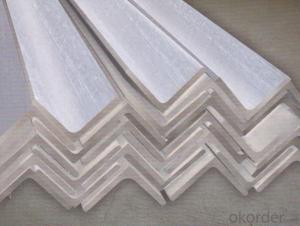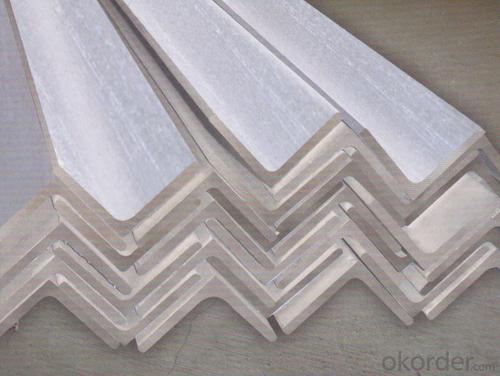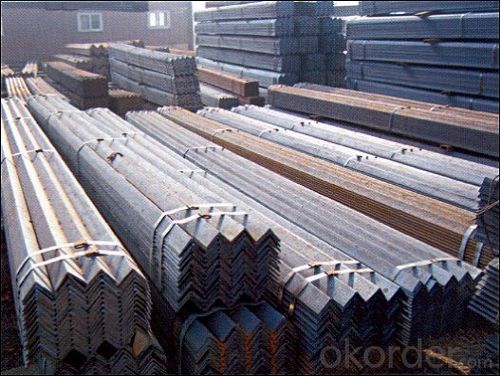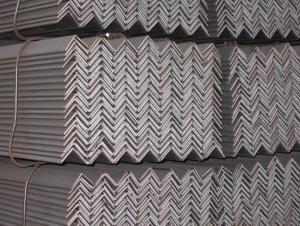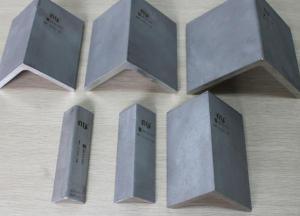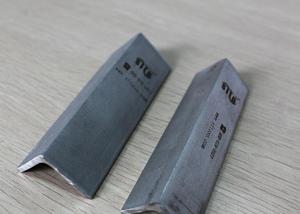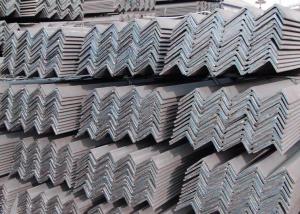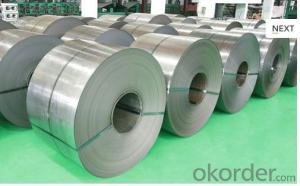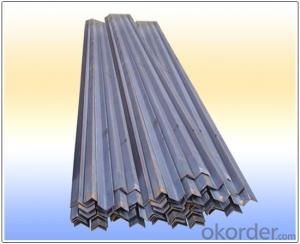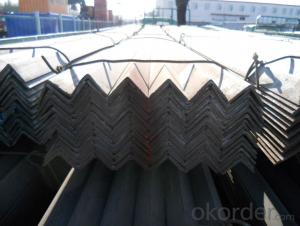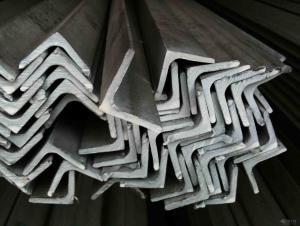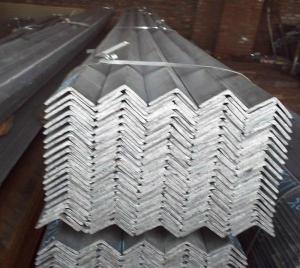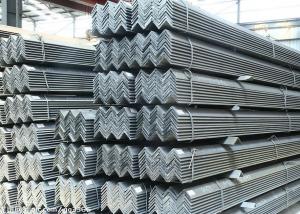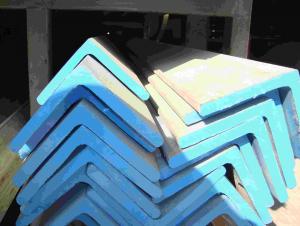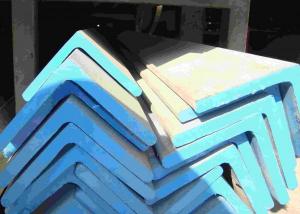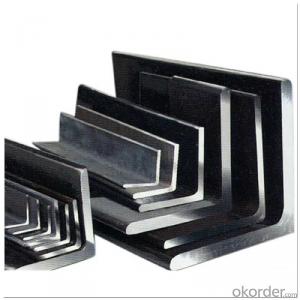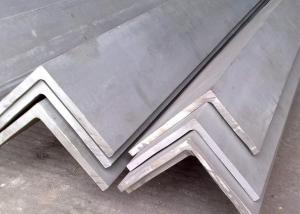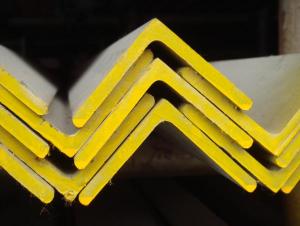Stainless Steel Angle
- Loading Port:
- China Main Port
- Payment Terms:
- TT OR LC
- Min Order Qty:
- -
- Supply Capability:
- -
OKorder Service Pledge
OKorder Financial Service
You Might Also Like
Specifications
Stainless Steel Angle Bar
Grade:304,316,316L,304L.430.
HRAP and sand blasting.
Size:2.5 x25x25mm--12 x120x120mm
Specifications
Item | Stainless Steel Angles |
Grade | 201 304 316 410 430 ect. |
Material | 200 300 400 500 600 SERIES |
Standard | GB, AISI, ASTM, ASME, EN, BS, DIN, JIS |
Surface | ordinary industrial surface, or customized |
Thickness | customized |
width | customized |
Length | 2000-6000mm, or customized |
Grade | Chemical Composition of our products (%) | |||||||||
C | Si | Mn | S | P | Cr | Ni | Cu | Mo | Fe | |
201 | 0.12 | 0.42 | 7.62 | 0.023 | 0.031 | 14.2 | 3.58 | 1.05 | / | balance |
304 | 0.053 | 0.41 | 1.22 | 0.018 | 0.036 | 18.15 | 8.04 | 0.048 | / | balance |
316 | 0.057 | 0.45 | 1.23 | 0.021 | 0.034 | 16.32 | 10.12 | 0.021 | 2.06 | balance |
410 | 0.14 | 0.41 | 0.43 | 0.023 | 0.031 | 11.83 | 0.004 | 0.002 | / | balance |
430 | 0.11 | 0.48 | 0.083 | 0.023 | 0.038 | 16.24 | 0.007 | / | / | balance |
We would be most appreciated if you could take your precious time to contact with us, also you can take this opportunity to feel our warm passion, even if you are not intended to purchase our products right now, we could make friends first.We would be most appreciated if you could take your precious time to contact with us, also you can take this opportunity to feel our warm passion, even if you are not intended to purchase our products right now, we could make friends first.
- Q: How does stainless steel angle perform in vibration-prone environments?
- Stainless steel angle is highly effective in environments with vibrations. The properties of stainless steel, such as its strength, durability, and resistance to corrosion, make it an ideal option for applications that experience continuous vibrations. The unique composition of stainless steel, which includes a significant amount of chromium, provides excellent protection against corrosion and oxidation. This means that stainless steel angle can withstand the harsh conditions often found in environments prone to vibrations, such as exposure to moisture, chemicals, and extreme temperature changes. Additionally, stainless steel has a high tensile strength, allowing it to resist deformation and maintain its structural integrity even when subjected to constant vibrations. This makes stainless steel angle extremely reliable and durable in applications where vibrations are common, such as machinery, construction projects, and infrastructure. Furthermore, stainless steel is well-known for its exceptional damping properties. It has the ability to absorb and dissipate energy from vibrations, reducing the risk of structural failure or damage. This damping effect helps to minimize the transmission of vibrations to other components, ensuring a stable and secure environment. To summarize, stainless steel angle is an excellent choice for environments with vibrations due to its corrosion resistance, high tensile strength, and damping properties. Its ability to withstand constant vibrations and maintain its structural integrity makes it a reliable and long-lasting option for various applications.
- Q: How do stainless steel angles contribute to load-bearing capacity?
- The load-bearing capacity of structures is greatly enhanced by the use of stainless steel angles. These angles are specifically designed to withstand heavy loads and provide structural stability. To begin with, stainless steel angles possess a high strength-to-weight ratio, allowing them to support larger loads without adding excessive weight to the structure. This is particularly important in load-bearing applications where minimizing the weight of the structure is crucial. Additionally, stainless steel angles exhibit excellent corrosion resistance properties. This is of utmost importance for load-bearing structures that are exposed to harsh environments or high moisture levels, such as bridges, coastal buildings, or industrial facilities. The corrosion resistance of stainless steel angles ensures their durability and longevity, thereby preserving the load-bearing capacity of the structure for an extended period of time. Moreover, stainless steel angles offer great versatility and can be easily customized to meet specific load-bearing requirements. They can be fabricated in various sizes, lengths, and thicknesses to accommodate different structural designs and loads. This flexibility allows for optimal load distribution and efficient transfer of forces, maximizing the load-bearing capacity of the structure. Furthermore, stainless steel angles possess excellent fire resistance properties, making them suitable for load-bearing applications in fire-sensitive environments. Their ability to withstand high temperatures without compromising their structural integrity ensures that the load-bearing capacity remains intact even in the event of a fire. In conclusion, the incorporation of stainless steel angles into load-bearing applications significantly contributes to the overall load-bearing capacity of structures. This is achieved through their high strength-to-weight ratio, corrosion resistance, versatility, and fire resistance properties. By utilizing stainless steel angles, engineers and architects can guarantee the structural stability and safety of their projects.
- Q: Can stainless steel angles be used in the production of oil and gas equipment?
- Indeed, the utilization of stainless steel angles is possible in the manufacturing of equipment for oil and gas purposes. With its exceptional resistance to corrosion and ability to endure harsh surroundings, stainless steel proves to be an optimal material for such applications. The fabrication of diverse components, including frames, brackets, supports, and structural elements, can be accomplished using stainless steel angles for oil and gas equipment. The remarkable robustness and longevity of stainless steel guarantee the reliability of the equipment, even in challenging circumstances. Moreover, the ease of cleaning and maintenance associated with stainless steel makes it a favored choice for oil and gas equipment, where hygiene and safety are of utmost importance.
- Q: What are the tolerances for stainless steel angles?
- The specific grade and manufacturing process of stainless steel angles can cause variations in tolerances. Industry standards, such as ASTM International or ISO, typically dictate the tolerances for stainless steel angles. These tolerances typically define limits for the leg length, thickness, and width of the angle. For instance, the leg length tolerance may be ±1/16 inch or ±1.5 millimeters. The thickness tolerance might be ±0.010 inch or ±0.25 millimeters, while the width tolerance could be ±1/8 inch or ±3 millimeters. These tolerances ensure that the stainless steel angles meet the necessary specifications and account for slight variations in dimensions during manufacturing. To determine the specific tolerances for a particular stainless steel angle, it is crucial to refer to the relevant industry standards or manufacturer specifications.
- Q: What is the resistance to thermal expansion of stainless steel angles?
- The resistance to thermal expansion of stainless steel angles can vary depending on the specific grade of stainless steel being used. Generally, stainless steel has a low coefficient of thermal expansion, meaning it expands and contracts minimally when exposed to changes in temperature. This property is one of the reasons stainless steel is commonly used in applications where thermal expansion needs to be minimized, such as in construction, aerospace, and automotive industries. However, it is important to note that different grades of stainless steel can have slightly different coefficients of thermal expansion, so it is recommended to consult the specific technical data sheet for the particular stainless steel grade being considered for accurate information on its resistance to thermal expansion.
- Q: Can stainless steel angles be used in transportation infrastructure?
- Yes, stainless steel angles can be used in transportation infrastructure. Stainless steel is known for its excellent corrosion resistance, durability, and strength, making it suitable for various applications in transportation infrastructure. Stainless steel angles can be used in the construction of bridges, railway tracks, highways, airports, and other transportation facilities. One of the primary benefits of using stainless steel angles in transportation infrastructure is their resistance to corrosion. Stainless steel contains chromium, which forms a protective oxide layer on the surface, preventing rust and corrosion caused by exposure to moisture, chemicals, and extreme weather conditions. This corrosion resistance ensures the longevity and durability of the transportation infrastructure, reducing maintenance costs and improving safety. Moreover, stainless steel angles offer high strength-to-weight ratio, making them ideal for structural applications. They can withstand heavy loads and provide structural stability, contributing to the safety and reliability of transportation infrastructure. Stainless steel angles are also highly resistant to fire and extreme temperatures, further enhancing their suitability for transportation applications. In addition to their mechanical properties, stainless steel angles have an aesthetic appeal, which is crucial in transportation infrastructure projects. They can be polished, brushed, or coated to achieve desired finishes, enhancing the visual appeal of bridges, railings, and other transportation structures. Furthermore, stainless steel is an environmentally friendly material. It is 100% recyclable, which aligns with sustainability goals in transportation infrastructure projects. Using stainless steel angles promotes a circular economy by reducing the demand for new raw materials and minimizing waste. Overall, stainless steel angles offer numerous advantages that make them suitable for transportation infrastructure. Their corrosion resistance, durability, strength, aesthetic appeal, and environmental benefits make them a viable choice for various applications in this sector.
- Q: Can stainless steel angles be used in railway applications?
- Yes, stainless steel angles can be used in railway applications. Stainless steel is a highly durable and corrosion-resistant material, making it suitable for use in environments with high levels of moisture, such as railways. Stainless steel angles can be used for various purposes in railway applications, including as structural supports, brackets, and reinforcements. The strength and stability of stainless steel angles make them ideal for withstanding the heavy loads and vibrations associated with railway operations. Additionally, stainless steel's resistance to corrosion ensures that the angles will maintain their integrity and performance over an extended period of time, making them a reliable choice for railway applications.
- Q: What are the thermal conductivity properties of stainless steel angles?
- Good thermal conductivity properties are possessed by stainless steel angles. The term "thermal conductivity" pertains to a material's capability to conduct heat. Stainless steel is renowned for its elevated thermal conductivity, enabling efficient heat transfer between different points. This characteristic renders stainless steel angles suitable for applications emphasizing heat transfer, such as in heat exchangers, radiators, and other thermal management systems. Moreover, stainless steel angles exhibit exceptional corrosion resistance, strength, and durability, making them the preferred option in diverse industries where thermal conductivity plays a vital role.
- Q: What are the factors to consider when selecting stainless steel angles?
- When selecting stainless steel angles, there are several factors to consider to ensure you choose the right product for your specific needs. 1. Grade of Stainless Steel: Stainless steel is available in various grades, each offering different levels of corrosion resistance, strength, and durability. The grade selection should be based on the environmental conditions the angles will be exposed to. For example, marine environments require a higher grade of stainless steel, such as 316, to withstand the corrosive effects of saltwater. 2. Dimensions and Size: Stainless steel angles come in various sizes and dimensions, including thickness, width, and length. Consider the specific requirements of your project and ensure the angles meet the necessary dimensions for a proper fit. 3. Finish: Stainless steel angles are available in different finishes, including brushed, polished, or mill. The finish not only affects the appearance but also impacts the resistance to corrosion and ease of maintenance. Choose the finish based on your aesthetic preferences and the level of maintenance you are willing to undertake. 4. Application: Consider the specific application for which you require stainless steel angles. Different applications may require different qualities of stainless steel, such as high strength or heat resistance. Determine the specific requirements of your application and choose the angles accordingly. 5. Cost: Cost is an important factor to consider when selecting stainless steel angles. The price can vary based on the grade, size, finish, and supplier. Set a budget and explore different options to find the best balance between quality and cost. 6. Supplier Reputation: It is crucial to select a reputable supplier or manufacturer when purchasing stainless steel angles. Look for suppliers with a proven track record of providing high-quality products and excellent customer service. Reading customer reviews and seeking recommendations can help you make an informed decision. By considering these factors, you can select stainless steel angles that meet your specific requirements in terms of durability, strength, corrosion resistance, appearance, and budget.
- Q: Can stainless steel angles be used for bike racks?
- Yes, stainless steel angles can be used for bike racks. Stainless steel is a durable and corrosion-resistant material, making it suitable for outdoor applications like bike racks. The angles can be used to provide structural support and stability for the racks.
Send your message to us
Stainless Steel Angle
- Loading Port:
- China Main Port
- Payment Terms:
- TT OR LC
- Min Order Qty:
- -
- Supply Capability:
- -
OKorder Service Pledge
OKorder Financial Service
Similar products
Hot products
Hot Searches
Related keywords
